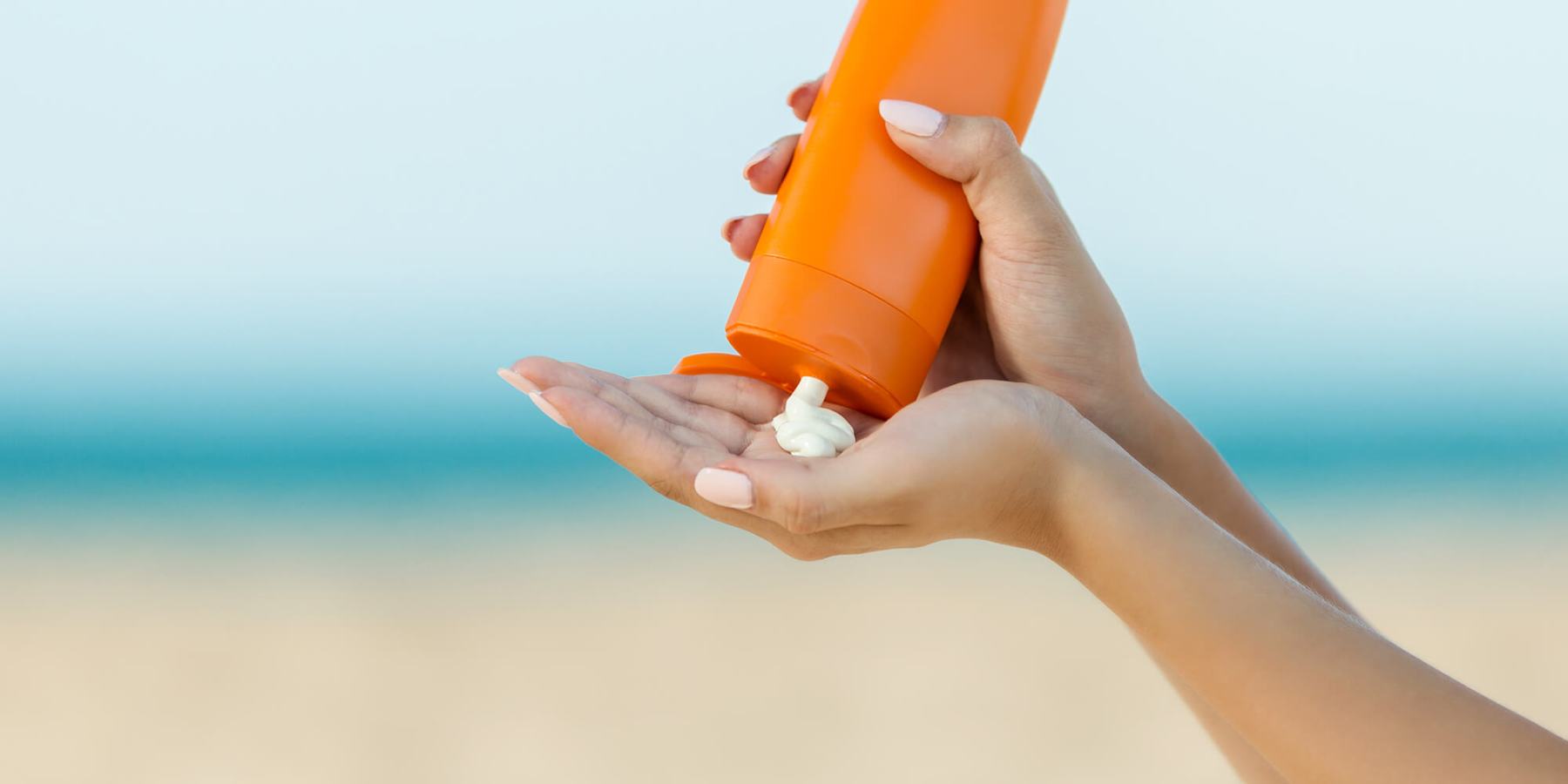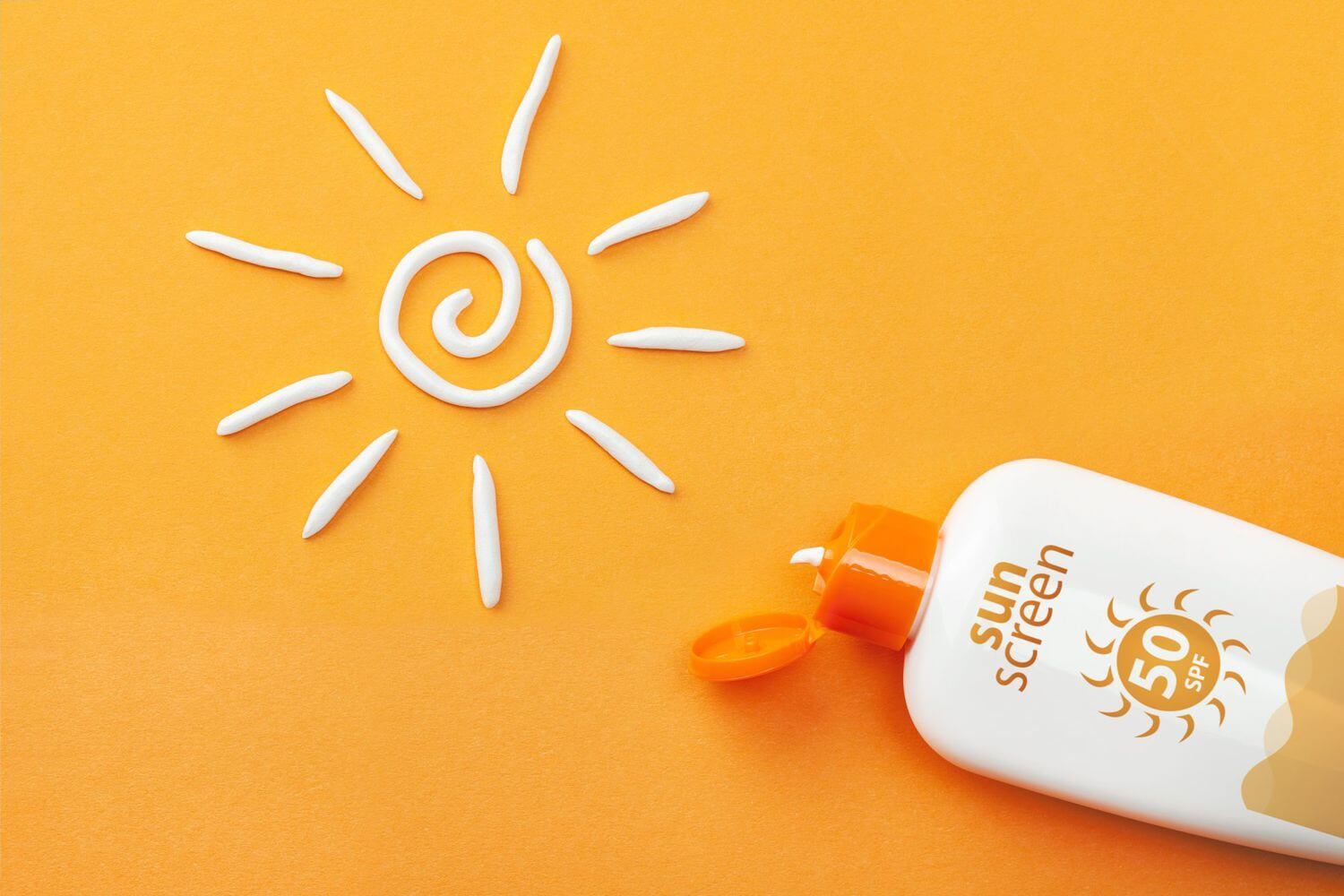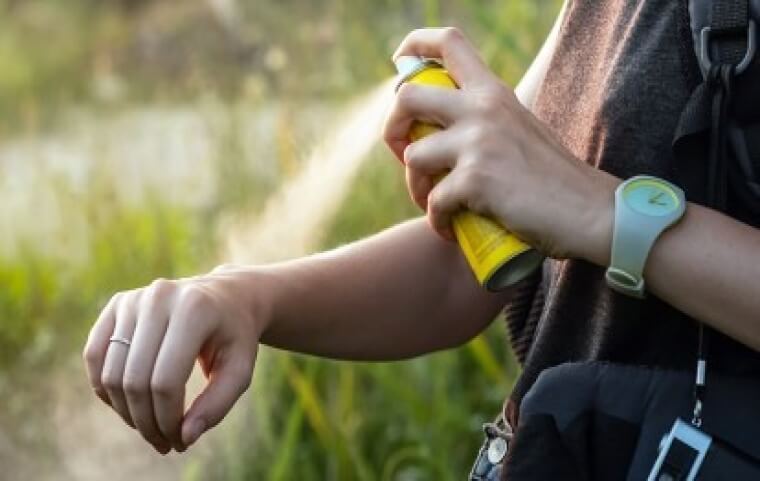As summer approaches, everyone needs to prepare for warmer temperatures and increased sun exposure. Proper sun protection and insect repellent usage are vital to ensure a safe and enjoyable season. When spending time outdoors, knowing the potential dangers of increased sun exposure and pesky insects, such as mosquitoes and ticks, is crucial.

Wearing sunscreen is vital for summer sun protection. Understanding the different types of sunscreen and finding the right one for your skin type and needs is crucial. In addition, learning how to apply sunscreen effectively is essential for proper sun protection. Meanwhile, insect repellents are a shield against harmful insects that can transmit diseases or cause skin irritation.
Key Takeaways
- Sun protection and insect repellent usage are vital for a safe summer.
- Choosing the right sunscreen and applying it effectively is crucial.
- Utilizing insect repellent can help protect against insect-borne diseases.
Understanding Sun Protection

The Importance of SPF
When protecting your skin from the sun, it’s crucial to understand the significance of SPF (Sun Protection Factor). SPF measures how effectively a sunscreen product shields your skin from harmful UVB rays, which can cause sunburns and contribute to skin cancer. The American Academy of Dermatology recommends sunscreen with an SPF of 30 or higher.
Remember that a higher SPF doesn’t necessarily mean it offers significantly better protection. For instance, SPF 30 blocks about 97% of UVB rays, while SPF 50 blocks 98%; the difference between them is minimal.
Broad-Spectrum Protection
Protecting your skin from UVA rays is essential in addition to UVB rays. UVA rays penetrate deeper into the skin, leading to premature aging and increasing the risk of skin cancer. To ensure comprehensive sun protection, look for a broad-spectrum sunscreen. This type of sunscreen offers protection against both UVA and UVB rays.
Mineral sunscreen, also known as physical sunscreens, is a great option for broad-spectrum protection. These sunscreens contain active ingredients like zinc oxide and titanium dioxide. These ingredients create a barrier on your skin, reflecting the sun’s rays and providing protection against both UVA and UVB radiation.
By following the American Academy of Dermatology’s recommendations, you can give your skin the protection it needs from the sun’s damaging effects. Wear sunscreen with SPF 30 or higher and ensure it’s labeled as broad-spectrum. Don’t forget to reapply it every two hours or after swimming or sweating, ensuring that you keep your skin healthy this summer.
Choosing the Right Sunscreen

Physical vs. Chemical Sunscreens
When selecting sunscreen, it is essential to understand the difference between physical and chemical sunscreens. Physical sunscreens contain active mineral ingredients, such as zinc oxide or titanium dioxide, which act as a barrier to reflect UV rays. In contrast, chemical sunscreens contain organic compounds, like oxybenzone, that absorb UV rays and convert them into heat, dissipating off the skin.
To help you decide between the two, consider the following points:
- Physical sunscreens:
- Provide immediate protection upon application.
- It can be better for sensitive skin.
- It may leave a white cast on darker skin tones.
- Chemical sunscreens:
- It requires 15-20 minutes to be fully absorbed and effective.
- It can break down over time and may require reapplication.
- It may cause skin irritation for some individuals.
Sunscreen Ingredients and Toxicity
Many sunscreens contain potentially harmful ingredients to both humans and the environment. One such ingredient, oxybenzone, has been found to contribute to coral reef bleaching and is banned in some countries. The Environmental Protection Agency (EPA) advises selecting sunscreens with a minimal environmental impact. To reduce toxicity concerns, consider:
- They check labels for ingredients that cause environmental harm, such as oxybenzone.
- Looking for sunscreens labeled “reef safe” or “ocean-friendly.”
- I am choosing mineral-based sunscreens over chemical-based ones.
Consumer Reports and the EPA provide guides for selecting environmentally friendly sunscreens with adequate sun protection.
Sunscreen for Different Skin Types
Choosing a sunscreen that caters to your specific skin type is vital to ensure optimal sun protection. Here’s a brief guide:
- Fair skin: Choose a sunscreen with a higher Sun Protection Factor (SPF), ideally 30-50.
- Sensitive skin: Look for sunscreens that are fragrance-free, hypoallergenic, and non-comedogenic.
- Oily skin: Opt for oil-free and non-comedogenic sunscreens with a matte finish.
- Dry skin: Search for sunscreens with moisturizing ingredients such as glycerin and hyaluronic acid.
Lastly, always select a broad-spectrum sunscreen, as it protects against both UVA and UVB rays. Also, pay attention to water resistance, as it can help maintain sun protection while swimming or sweating. Remember that water-resistant sunscreen is not waterproof; constantly reapply after swimming or excessive sweating.
Considering the factors discussed above, you’ll be well-equipped to choose the right sunscreen for your needs, ensuring adequate sun protection and minimizing environmental impact.
Effective Sunscreen Application

When and How to Apply
Applying sunscreen correctly before sun exposure is crucial to ensuring maximum protection. Always follow the manufacturer’s instructions on the product label. As a general rule, apply a generous amount of sunscreen, approximately a shot glass (or 1 ounce), to cover your entire body. Apply it evenly to all exposed areas, including often-overlooked ones such as the neck, ears, and the tops of your feet.
Sunscreen should be applied at least 15 to 30 minutes before sun exposure to allow for proper absorption into the skin. It’s also important to remember to apply sunscreen on cloudy or overcast days, as harmful UV rays can still penetrate clouds.
Reapplication and Water Exposure
Regardless of the sunscreen’s water resistance, it is best to reapply after swimming or participating in any water-related activities. Additionally, it is necessary to reapply after sweating or towel drying, as these actions can remove the protection.
Even if you are not exposed to water, it is still recommended that you reapply sunscreen every two hours to ensure continued sun protection. Refer to the product label and follow the manufacturer’s recommended reapplication times.
Sun Protection for Face and Lips
The delicate skin on your face and lips requires special attention and care regarding sun protection. It is recommended that you use a separate sunscreen product specifically designed for the face, preferably with a higher SPF. Apply sunscreen to your entire face, neck, ears, and hairline.
Remember to protect your lips as well since they are also susceptible to sunburn. Opt for a lip balm containing SPF and reapply frequently throughout the day to maintain protection.
By taking these steps and applying effective sunscreen, you ensure the best possible protection for your skin and reduce the risk of sunburn, premature aging, and skin cancer.
Insect Repellent Use and Safety

Choosing the Right Repellent
When selecting an insect repellent, consider the active ingredient. Two common and effective ingredients are DEET and Picaridin. The Environmental Protection Agency (EPA) recommends repellents containing these ingredients to protect against mosquitoes and ticks, which can transmit harmful diseases like Lyme, Zika, and West Nile virus.
The EPA offers a searchable database of registered insect repellents to help you choose the right product. The search results include protection time estimates against mosquitoes and ticks. Consider these estimates, as well as your planned activity, when making your choice.
For children and infants, choose repellents with lower concentrations of active ingredients and follow the age recommendations on the label. Consult your pediatrician before using repellents on infants under two months.
Application Tips for Insect Repellent
Follow these tips for proper insect repellent application:
- Apply to all exposed skin. Clothing can also be treated with repellents, but avoid applying directly to clothing-covered skin.
- Use sparingly around your face. Avoid the eyes and mouth, and use your hands to apply the repellent to your face.
- Reapply as needed, depending on the product’s protection time and your activity level. Remember to read the label for specific instructions.
- If you plan to use both products, apply sunscreen first. Allow the sunscreen to absorb before applying the insect repellent.
DEET and picaridin are considered safe for pregnant or breastfeeding adults when used as directed. Always consult your healthcare provider if you have concerns.
Remember, using insect repellent correctly is crucial in protecting yourself from harmful bites and the diseases they can transmit. Follow these guidelines and enjoy your time outdoors safely and confidently.
Additional Sun and Insect Protection Measures

Clothing and Accessories
Hats are a must-have when spending hours outdoors during summer. A wide-brimmed hat can protect your face, neck, and ears from the sun’s harmful rays. Covering your skin with lightweight clothing can also reduce sun exposure and prevent biting insects from reaching your skin.
Wear sunglasses with UV protection to shield your eyes from harmful solar radiation. In addition, wearing light-colored clothing can help you stay more relaxed in the sunlight and make it more difficult for biting insects to find you.
Consider using a lip balm with an SPF of at least 15 to protect your lips from the sun’s rays. Applying lotions and sprays containing active ingredients like DEET or picaridin can help repel biting insects, making your time outdoors safer and more comfortable.
Remember to check that your sunscreen and insect repellent products have a safe and effective formulation, as the Centers for Disease Control and Prevention (CDC) recommends. Reapply these products every few hours or as directed on the label.
Environmental Considerations
Be mindful of the environment you spend time in during the summer months. Look for shaded areas with natural tree or shelter coverage to minimize direct sun exposure. Staying in shaded spots, especially between 10 a.m. and 4 p.m. when the sun’s rays are the strongest, can significantly reduce your risk of sunburn.
Consider using chemical-free methods to keep biting insects at bay:
- Place insect screens on windows and doors.
- Remove standing water sources around your home.
- Use insect traps or natural insecticides.
In conclusion, it’s essential that you take the necessary precautions to protect yourself from sun exposure and biting insects during the summer months. By combining appropriate clothing and accessories, environmental considerations, and the regular use of sunscreen and insect-repellent products, you can ensure a safe and enjoyable outdoor experience.
Frequently Asked Questions
What are the best practices for applying sunscreen and insect repellent together?
When using sunscreen and insect repellent together, apply sunscreen first, allowing it to absorb your skinughly fully. Wait for approximately 30 minutes before applying the insect repellent on top. This practice ensures that each product maintains its effectiveness and avoids chemical interactions between the two.
Which ingredients should I look for in a combined sunscreen and insect-repellent product?
When searching for a combined sunscreen and insect repellent product, look for sunscreens with broad-spectrum protection and an SPF of 30 or higher. For insect repellents, look for products containing DEET, picaridin, or oil of lemon eucalyptus as active ingredients. These ingredients provide adequate protection against both sunburn and insect bites.
Are there any safety concerns when using sunscreen with DEET insect repellent?
When using sunscreen with DEET insect repellent, it is essential to follow the product’s instructions and avoid overapplication. DEET can cause skin irritation and is not recommended for wounds or cuts. Also, avoid applying DEET to areas near your mouth, eyes, or hands to prevent accidental ingestion.
How does the effectiveness of sunscreen change when applied with insect repellent?
Due to the chemical interactions between the two products, sunscreen’s effectiveness may be slightly reduced when applied with insect repellent. However, using sunscreen first and waiting for it to be fully absorbed before applying insect repellent minimizes the impact on sunscreen effectiveness.
Can sunscreen and insect repellent be used together without reducing their effectiveness?
Yes, sunscreen and insect repellent can be used together without significantly reducing their effectiveness. Apply sunscreen first and wait for it to absorb into your skin before applying insect repellent. Reapply sunscreen every two hours or immediately after swimming or sweating to maintain protection.
What are the alternatives to Bullfrog sunscreen for sun and insect protection?
If you prefer alternatives to Bullfrog sunscreen, consider using separate sunscreen and insect-repellent products. Look for sunscreens with broad-spectrum protection and an SPF of 30 or higher and insect repellents with DEET, picaridin, or lemon eucalyptus oil as active ingredients. Remember to apply sunscreen first and insect repellent second to maintain their effectiveness.